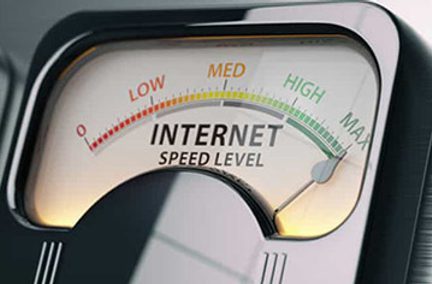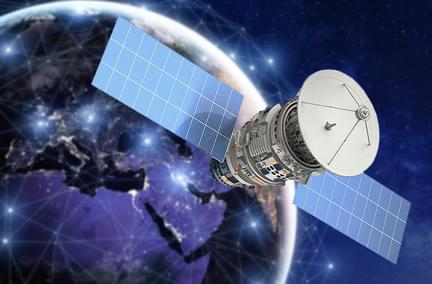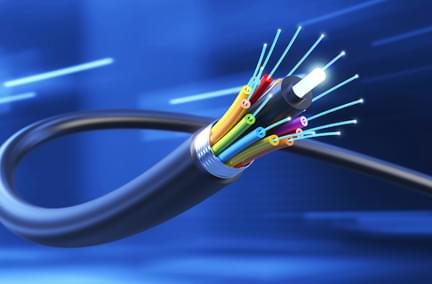Speed Wars, Episode IV: Fiber vs. 5G
Nov 29, 2022 | Home Technology, Technology News

In this fourth episode of Speed Wars, we will compare fiber internet to a new and popular alternative, 5G. Which one is better?
The internet is constantly changing. Not just the content but how it is delivered to your device. Before wireless connections, we all had to plug our computers into a Cat5 LAN cable to get online. Today, the internet seems to waft through the wind. But it still comes to us through a service. The latest iteration is the 5G network.
Let’s look at the pros and cons of a 5G network vs. a fiber optic connection. In some ways, they are similar, but there are some key differences.
What is 5G?
Unlike fiber optic internet, which comes to your home via a protected strand of glass either buried in the ground or hung on a utility pole, 5G does not have a hardline connection. Instead, it relies on antennas attached to cell phone towers to broadcast signals to nearby receivers placed in the home. Naturally, the closer the home is to the tower, the better bandwidth and service.
Ironically, many 5G systems rely on fiber-optic connections between towers for maximum speed because fiber is the fastest way to send data.
Pros & Cons of 5G
Like every emerging technology, 5G has its ups and downs. In some ways, it’s fantastic. Sometimes, however, the kinks have not been worked out yet. And some of the technology has intrinsic limitations that won’t likely be fixed until the next iteration, if at all. Let’s look at how 5G works to understand its abilities and limitations better.

Density
Because 5G service relies on a network of cell towers, it is mainly available in densely populated areas. As a result, many rural areas and locations cannot currently get 5G service. However, coverage is expanding at a fairly rapid pace.
Speed
How does 5G compare to older technologies? The current 5G network can send data faster than 4G, depending on coverage area and cell tower density, so certainly, the technology has improved tremendously over the last generation. However, 5G coverage requires more towers per square mile than 3G or 4G to cover the same area.
5G operates on different bandwidths that transmit at slow and faster speeds and allow for various numbers of users and devices at one time. Like cable internet, 5G coverage depends on how close the user and device are to the nearest access point. The farther away the tower is, the slower the speeds. So, if you live right by a 5G tower, you will likely get better speed more of the time. The farther away you live, the more the distance and number of users between you and the tower will affect your bandwidth.
Interference
One major drawback of 5G is the nature of the over-the-air broadcast. All radio communications – not just the internet – are subject to environmental factors such as rain, wind, and temperature that can affect reliability. 5G is no different.
Cost
Deploying a 5G network tends to be more expensive for providers because 5G operates in a frequency range that travels shorter distances, requiring more towers to be built than for the older 4G and 3G services. In some cases, antennas can be hung on existing towers, but sometimes new towers are needed.
Pros & Cons of Fiber
What about fiber optic internet? How does it compare? When it comes to pure speed, fiber optics can’t be beat.
Speed
Fiber carries more than enough bandwidth – 10 Gig and beyond – to handle the ever-growing demand for more devices to connect. With almost infinite scalability, fiber optic data speed is only limited by the electronics on both ends of the fiber. If the computer, server, or other equipment is obsolete or ill-equipped to handle the higher data speeds, you will not see the full benefit of fiber internet.
For gamers, fiber offers a better playing experience with lower ping and latency, improving your chances of winning, thanks to decreased lag. For all of us, we can enjoy a more consistent connection because fiber is unaffected by weather and other atmospheric conditions. Nor is it bothered by conflicting radio transmissions or susceptible to electronic interference by neighboring cables or power lines.
Safer signal
The advantage also goes to fiber for data integrity, as the signal can transmit down a fiber strand for over 80km without encountering significant data loss. This integrity can be critical for teleconferences, gaming, stock trading, and other time-sensitive online activities.
Limited availability
One big drawback to the current state of fiber optic internet is limited availability, although that is rapidly changing with more fiber providers entering the market. Areas that traditionally did not have internet or had slow connections through other means are now finding they have fiber service arriving, as more companies are reaching out to these underserved areas.
Cost
For providers, construction costs can be prohibitive, with a need to either deploy the fiber on power and telephone poles or bury the fiber underground. However, once the fiber is in the ground, there is no need to touch it or replace it ever again, as it has the capacity to scale up to much higher speeds as internet usage demands rise. Current and near-term projected use data suggest fiber optics will be able to handle the online load for decades to come.
- 5G
- Fiber internet
- home internet
- fiber optic internet
- 5G internet







